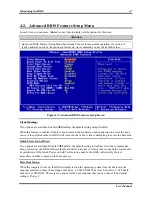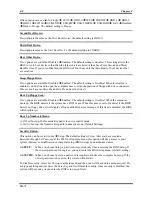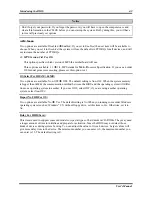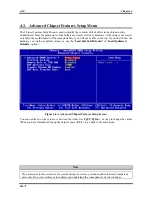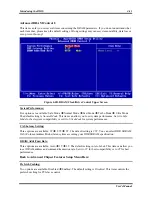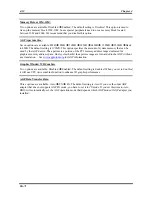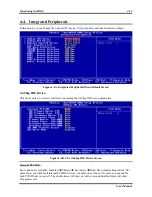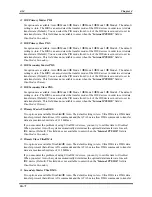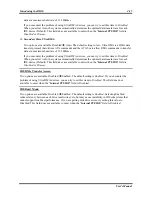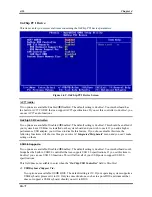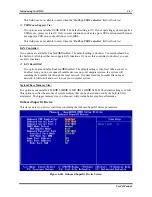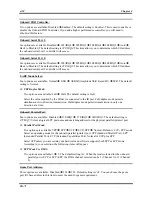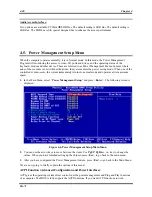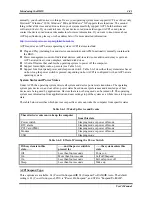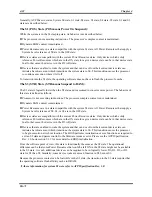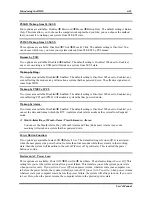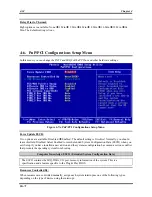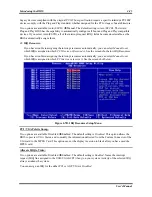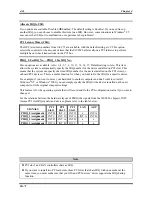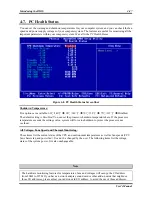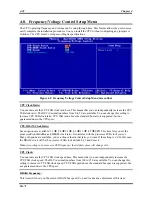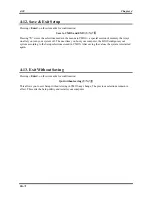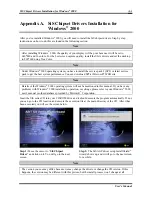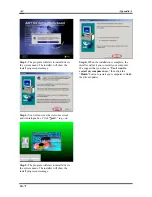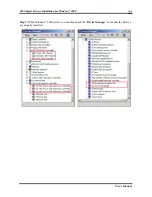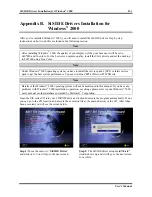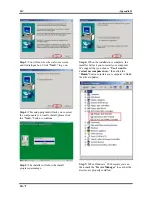
Introducing the BIOS
User’s Manual
4-21
normally, you should notice two things. One is your operating system must support ACPI, as of now only
Microsoft
®
Windows
®
2000, Windows
®
ME and Windows
®
XP supports these functions. The second
thing is that all devices and add-on cards in your system must fully support ACPI, both hardware and
software (drivers). If you want to know if your devices or add-on cards support ACPI or not, please
contact the device or add-on card manufacture for more information. If you want to know more about
ACPI specifications, please go to the address below for more detailed information:
http://www.teleport.com/~acpi/acpihtml/home.htm
ACPI requires an ACPI-aware operating system. ACPI features include:
Plug and Play (including bus and device enumeration) and APM functionality normally contained in
the BIOS.
Power management control of individual devices, add-in cards (some add-in cards may require an
ACPI-aware driver), video displays, and hard disk drives.
A Soft-off feature that enables the operating system to power off the computer.
Support for multiple wake-up events (see Table 3-6-1).
Support for a front panel power and sleep mode switch. Table 3-6-2 describes the system states based
on how long the power switch is pressed, depending on how ACPI is configured with an ACPI-aware
operating system.
System States and Power States
Under ACPI, the operating system directs all system and device power state transitions. The operating
system puts devices in and out of low-power states based on user preferences and knowledge of how
devices are being used by applications. Devices that are not being used can be turned off. The operating
system uses information from applications and user settings to put the system as a whole into a low-power
state.
The table below describes which devices or specific events can wake the computer from specific states.
Table 3-6-1: Wake Up Device and Events
These device/events can wake up the computer
from this state
Power switch
Sleeping mode or power off mode
RTC alarm
Sleeping mode or power off mode
PCI Card (PME)
Sleeping mode or power off mode
Modem Sleeping
mode
or power off mode
USB Sleeping
mode
Table 3-6-2: Effect of Pressing the Power Switch
If the system is in this
state……
……and the power switch is
pressed for
……the system enters this
state
Off
Less than four seconds
Power on
On
More than four seconds
Soft off/Suspend
On
Less than four seconds
Fail safe power off
Sleep
Less than four seconds
Wake up
ACPI Suspend Type:
Three options are available: S1 (PowerOn-Suspend)
S3 (Suspend-To-RAM)
Auto. The default
setting is
S1 (PowerOn-Suspend)
. POS is “
P
ower
O
n
S
uspend”, and STR is “
S
uspend
T
o
R
AM”.
Summary of Contents for SG-71
Page 2: ......
Page 50: ...Chapter 3 SG 71 3 18 ...
Page 84: ...Appendix A SG 71 A 4 ...
Page 88: ...Appendix B SG 71 B 4 ...
Page 92: ...Appendix C SG 71 C 4 ...
Page 110: ...Appendix H SG 71 H 6 ...
Page 114: ...Appendix I SG 71 I 4 ...

